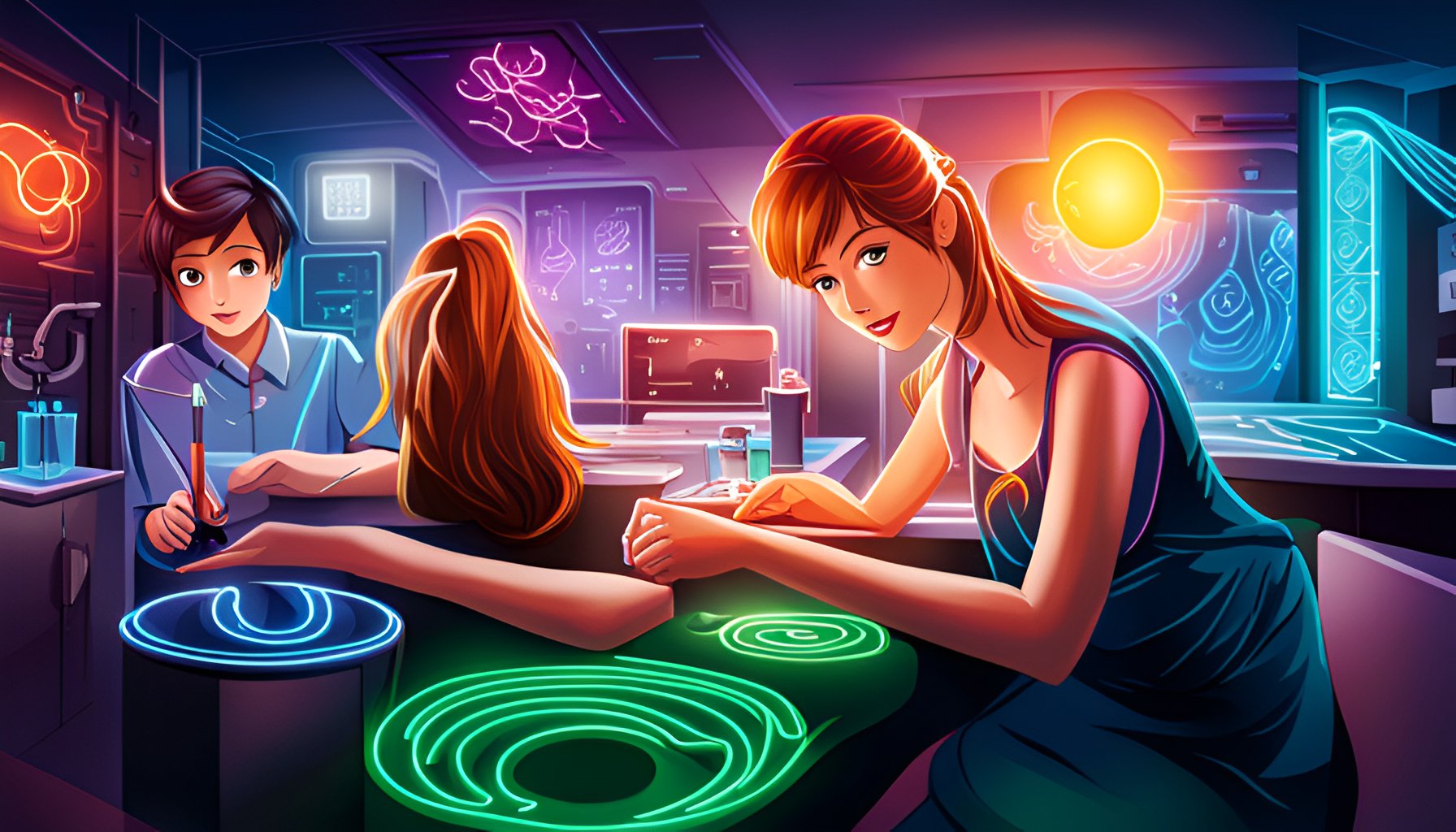The Fascinating World of Neon Science
Neon, with its bright and captivating glow, has long been a source of fascination for scientists and enthusiasts alike. Beyond its use in eye-catching signs, neon has a rich history and is a valuable tool for engaging and educating students in the field of science.
Neon Experiments: Igniting Curiosity
Neon experiments offer a hands-on and visually stimulating way to explore various scientific concepts. By conducting these experiments, students can deepen their understanding of fundamental scientific principles while having fun.
1. Neon Light Spectrum
One of the most captivating aspects of neon is its unique light spectrum. Set up a simple experiment by passing an electrical current through a sealed glass tube filled with neon gas. The result? A mesmerizing glow in various vibrant colors. Use a spectroscope to observe and analyze the distinct spectrum produced by neon. This experiment allows students to delve into the world of atomic structure and the emission of light.
By understanding the light spectrum produced by neon, students can grasp concepts such as energy levels, electron transitions, and the relationship between wavelength and color. This experiment also provides an excellent opportunity to discuss how neon is used in different applications, including advertising, art, and scientific research.
2. Neon Gas Properties
Neon is an inert gas, making it an excellent subject for experiments exploring gas properties. Fill balloons with neon gas and compare them to balloons filled with other gases. Observe how long the neon-filled balloon retains its brightness compared to the others. This experiment highlights neon's unique properties, such as its stability and lack of reactivity, and introduces students to the concept of inert gases.
Furthermore, students can explore the behavior of neon gas under different conditions, such as changes in pressure and temperature. By manipulating these variables, they can observe how neon responds and gain insights into the ideal gas law and the principles governing gas behavior.
3. Neon Signs and Electrical Circuits
Neon signs are not only visually appealing but also provide an excellent opportunity to explore electrical circuits. Encourage students to create their own miniature neon signs using low-voltage power supplies and neon indicator lamps. This experiment enhances their understanding of electrical conductivity, circuit design, and the role of different components in a circuit.
Students can learn about the concept of ionization and how neon gas becomes excited and emits light when an electrical current passes through it. They can also investigate the factors that affect the brightness and color of the neon glow, such as voltage, gas pressure, and the presence of other gases. This experiment allows students to apply their knowledge of circuits and electrical principles to a real-world application.
4. Neon and Liquid Nitrogen
Combine the fascinating properties of neon with the extreme cold of liquid nitrogen for an exciting experiment. Dip a sealed neon tube into liquid nitrogen and observe the changes in its behavior. The neon gas inside the tube will condense into a liquid, showcasing the effects of extreme temperature on different states of matter. This experiment sparks curiosity about the properties of gases and the concept of phase changes.
Students can explore how temperature affects the behavior of gases and learn about the critical temperature of neon, which is the temperature below which neon cannot exist as a gas, regardless of the pressure applied. They can also discuss the practical applications of neon in cryogenics and the importance of low-temperature research in various scientific fields.
5. Neon Luminescence
Explore the phenomenon of luminescence by conducting an experiment with fluorescent materials and neon. Coat objects such as paper, fabric, or glow sticks with fluorescent paint and place them near a neon light source. Observe how the objects emit their own vibrant glow under the influence of the neon light. This experiment introduces students to the concept of luminescent materials and the role of energy transfer in light emission.
Students can investigate different factors that influence the intensity and duration of the glow, such as the distance between the object and the neon light source, the type of fluorescent material used, and the ambient lighting conditions. They can also explore the principles of energy transfer and discuss the application of luminescent materials in fields such as medicine, forensics, and environmental monitoring.
6. Neon in Nature
While neon is commonly associated with artificial lighting, it also exists in trace amounts in the Earth's atmosphere. Engage students in a discussion about the presence of neon in nature and its role in scientific research. They can learn about the methods used to detect and measure neon in atmospheric samples and the significance of neon as an indicator of geological and meteorological processes.
Challenge students to design an experiment that explores the concentration of neon in different environments, such as urban areas, rural regions, or near natural phenomena like volcanoes or lightning storms. This experiment not only reinforces their understanding of neon but also encourages them to think critically and apply their scientific knowledge to real-world scenarios.
Conclusion
Engaging students in science education is crucial for fostering a love for learning and promoting scientific literacy. Neon experiments provide an exciting and interactive way to captivate students' interest and ignite their curiosity. By exploring the unique properties and behaviors of neon, students can develop a deeper understanding of various scientific principles and processes.
So, why not harness the captivating power of neon and bring science to life in your classroom? Incorporate these engaging neon experiments into your curriculum and watch as your students' enthusiasm for science soars!



Leave a comment
This site is protected by hCaptcha and the hCaptcha Privacy Policy and Terms of Service apply.